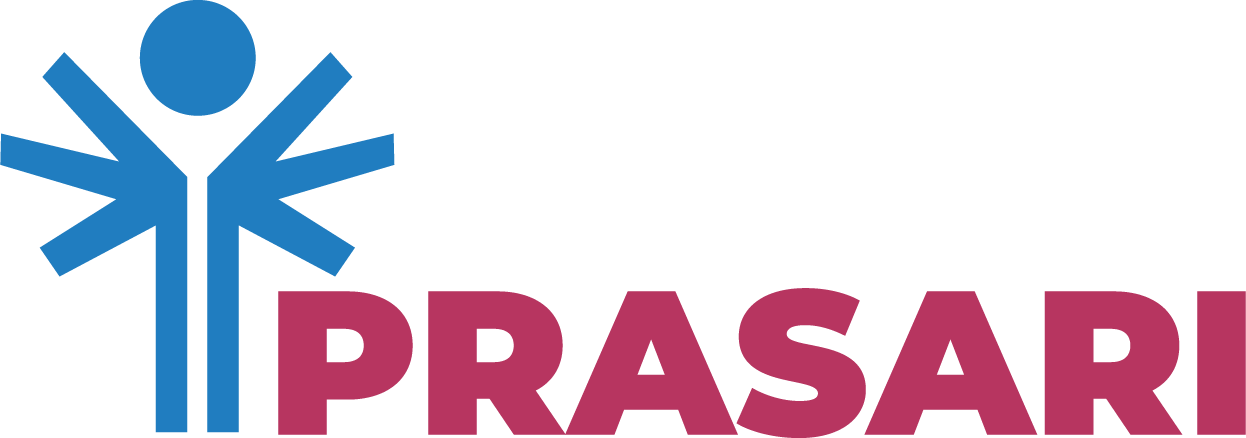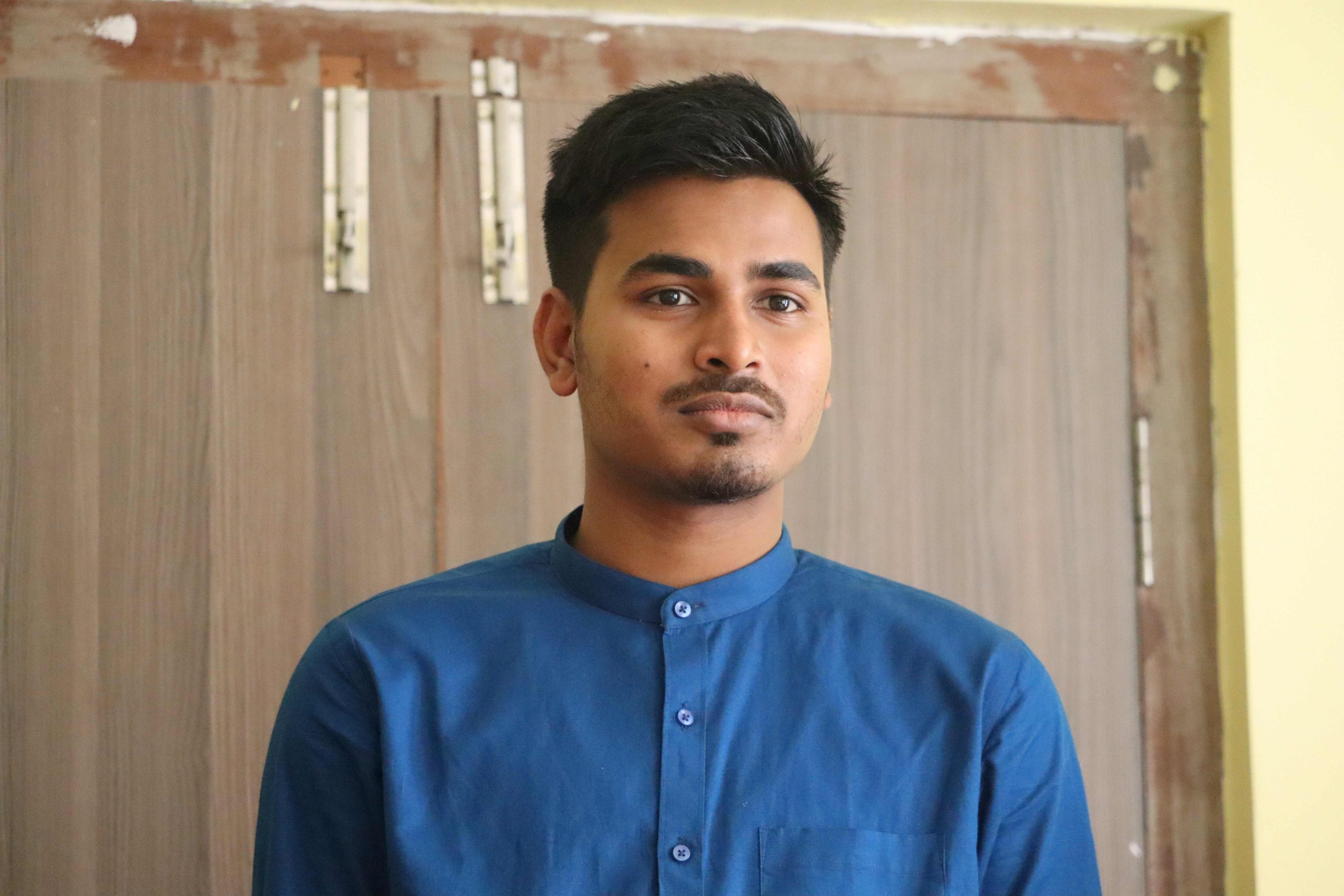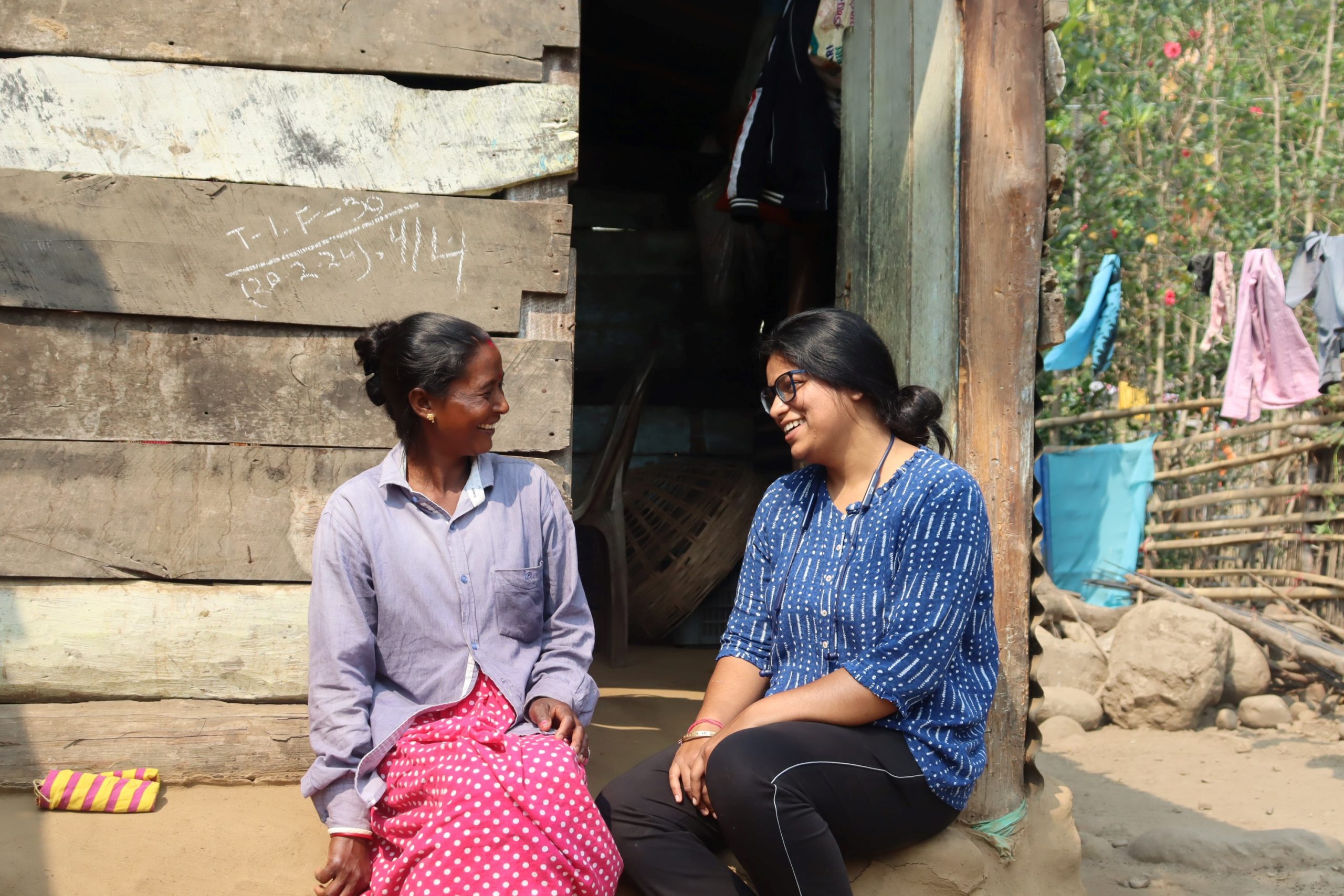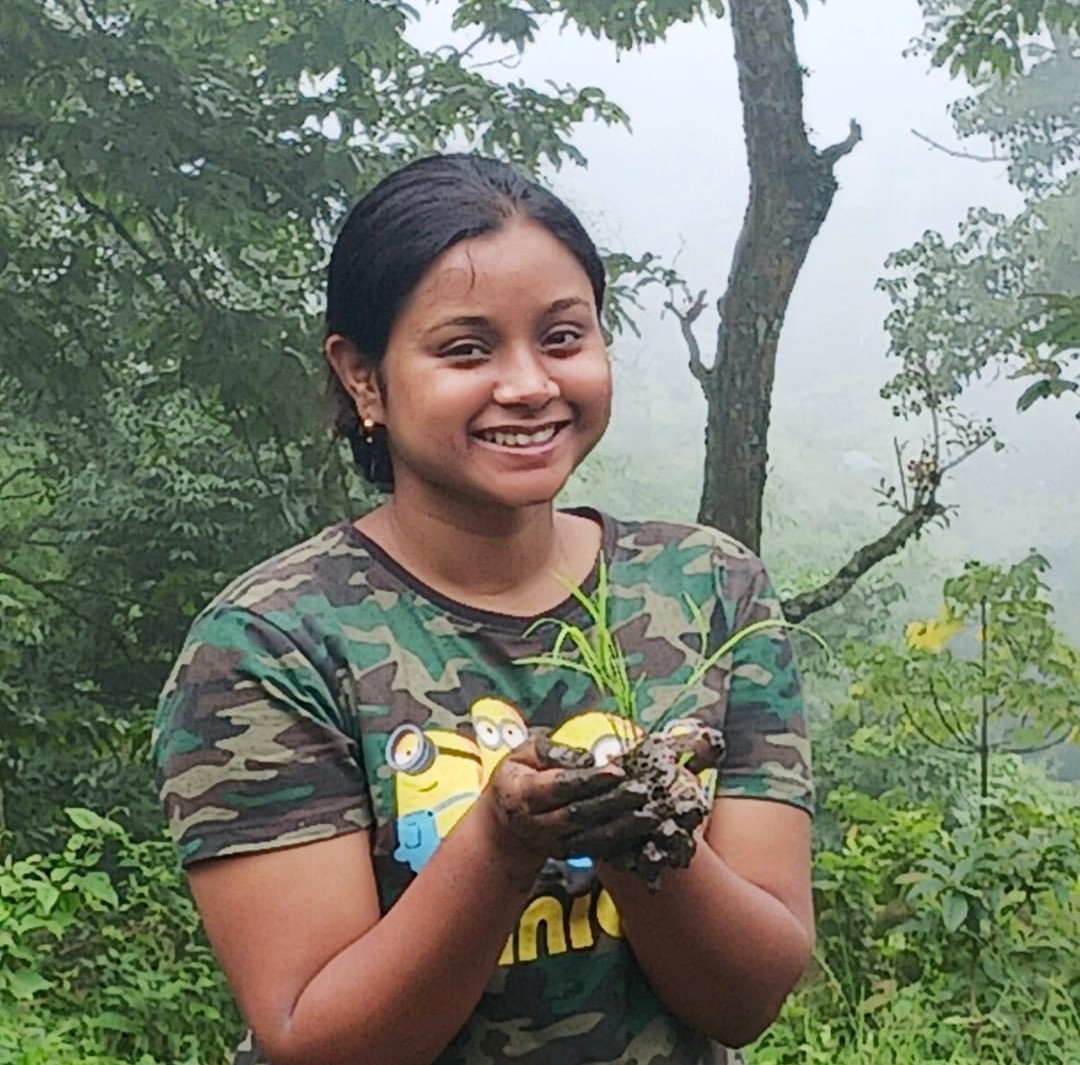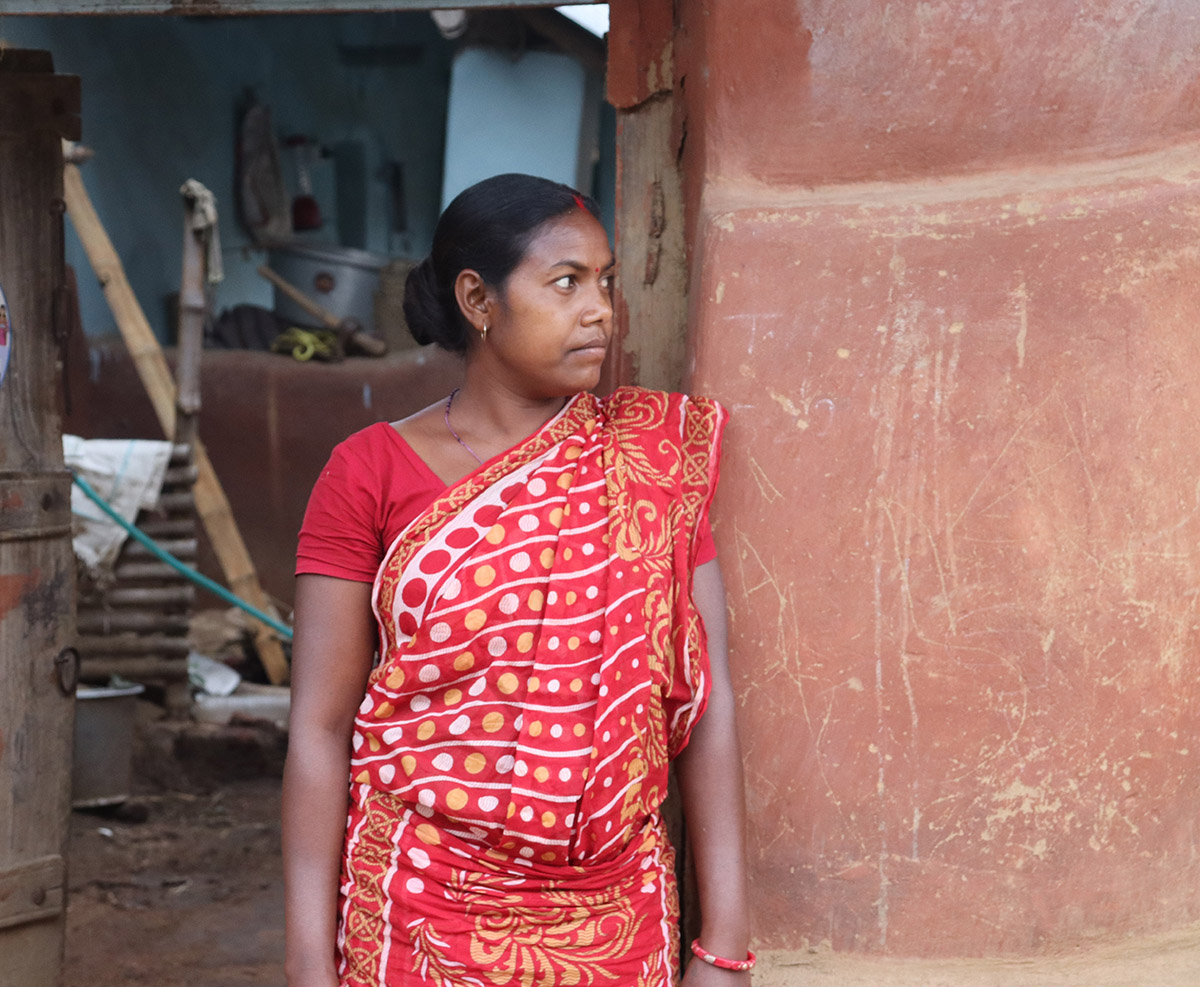 Sadhe Baskey stays in the village of Gurjanidhi in the Birbhum District of West Bengal with her husband and
three
children. Sadhe, along with her fellow residents from the Santhal community, lives a forest-based livelihood
with uncertainties. Sadhe, a school drop-out of class VIII, was not happy with the lifestyles and living
standards... She attended a village workshop on the "strength of collectivization. Coming back to the village,
the Gurujadih women formed their platform to fight the odds. ('Social Capial'-To be popped up) The Gurujandihi
(Marraang Buru) WLC started getting shape and stability with the ups and downs-journey as undulating as the
terrain of their village!! Starting with 30 members, they stabilized with 16 and further re-inclusion of 14
women in the women's platform of the village. Those who used to believe they belong to the 'have nots', started
identifying resources around them. Rediscovering their village, Sadhe and her group members mapped their land,
water, forests, and livestock in their village (Natural Capital-to be popped up on the screen). With the role of
time, the members from 'Marrang buru' and 'Tili shekham' started understanding the behaviours, uses, and
potentialities of the visible and hidden resources.
Sadhe Baskey stays in the village of Gurjanidhi in the Birbhum District of West Bengal with her husband and
three
children. Sadhe, along with her fellow residents from the Santhal community, lives a forest-based livelihood
with uncertainties. Sadhe, a school drop-out of class VIII, was not happy with the lifestyles and living
standards... She attended a village workshop on the "strength of collectivization. Coming back to the village,
the Gurujadih women formed their platform to fight the odds. ('Social Capial'-To be popped up) The Gurujandihi
(Marraang Buru) WLC started getting shape and stability with the ups and downs-journey as undulating as the
terrain of their village!! Starting with 30 members, they stabilized with 16 and further re-inclusion of 14
women in the women's platform of the village. Those who used to believe they belong to the 'have nots', started
identifying resources around them. Rediscovering their village, Sadhe and her group members mapped their land,
water, forests, and livestock in their village (Natural Capital-to be popped up on the screen). With the role of
time, the members from 'Marrang buru' and 'Tili shekham' started understanding the behaviours, uses, and
potentialities of the visible and hidden resources. 
Sadhe and Rekha learned the 'static water table' measurements in the wells, observing the changes in the water depths across monsoons to determine the direction for the flow of groundwater from the zone of recharge to discharge in a given hydrogeological area-they have learnt to 'delineate' on the revenue maps drawing black colour lines joining the 'dots' divides the surface water flow-are the ridge lines for their micro watershed. Sadhe, along with all her village members have undergone various training for design, layouts and execution of the resource husbandry activities, through a series of technical workshops.
The Gurujandih idea of collective resource husbandry through collective social institutions kept spreading to other 6 villages of the same micro watershed. The ‘asset creation’ from MGNREGA for the planned land water husbandry for Sadhe’s village was negotiated to be INR. 2.32 crores. Gurujandihi was introduced with the ‘Usharmukti’ (free from barrenness-implementing MGNREGA adapting watershed mode) programme promoted by the West Bengal State Government.
The uplands were treated and established with horticulture and diversified species of timber plantations, and the mid and low lands with water harvesting ponds brought in a lot of confidence and asset visibilities to Sadhe and her colleagues. A ‘deep-breathed and consolidated thinking’ put forth the need for finances to use the assets. A detailed livelihoods plan for inter-cropping and inter-culture maintenance of planted uplands, SRI and second crop from the created water resources and fishery in the water bodies adapting scientific packages. Sadhe and her groups counted and re-counted their savings of INR.30000 till 2021, and found it scanty concerning their dreams for livelihoods. This needed activity inputs costs to ensure the scientific interventions and significant returns for the families.(Financial Capital- to be popped up) They kept moving, and the formal credit institutions (UCO Bank) have been approached and tied up by the women platform to leverage a credit of INR.4.6 lakhs in a single financial year, with the provision of a very high Cash Credit limit. The hectares of green patches of Mango-moringa and existing and upcoming stretches of Arjuna for silk plantation have essentially generated the need for aggregation centres, centres for common facilities, irrigation and farm machines and grainage building and equipment(Physical Capital-to be popped up on the screen). The success of Sadhe and her group members has attracted investments from other line departments of the Government to install minor irrigation and micro irrigation systems for their villages. A long green cover stretch has also been attracting investments from Carbon buyers to finance the ‘hardware’ components for the livelihoods.
These Sadhes are the brand and representation of economic class and genders of PRASARI’s communities, prominent
in all the villages. Our approach to the integration of livelihood assets (Social, Human, Physical, Natural and
financial) is cross-cutting to yield the well-being of the intervening 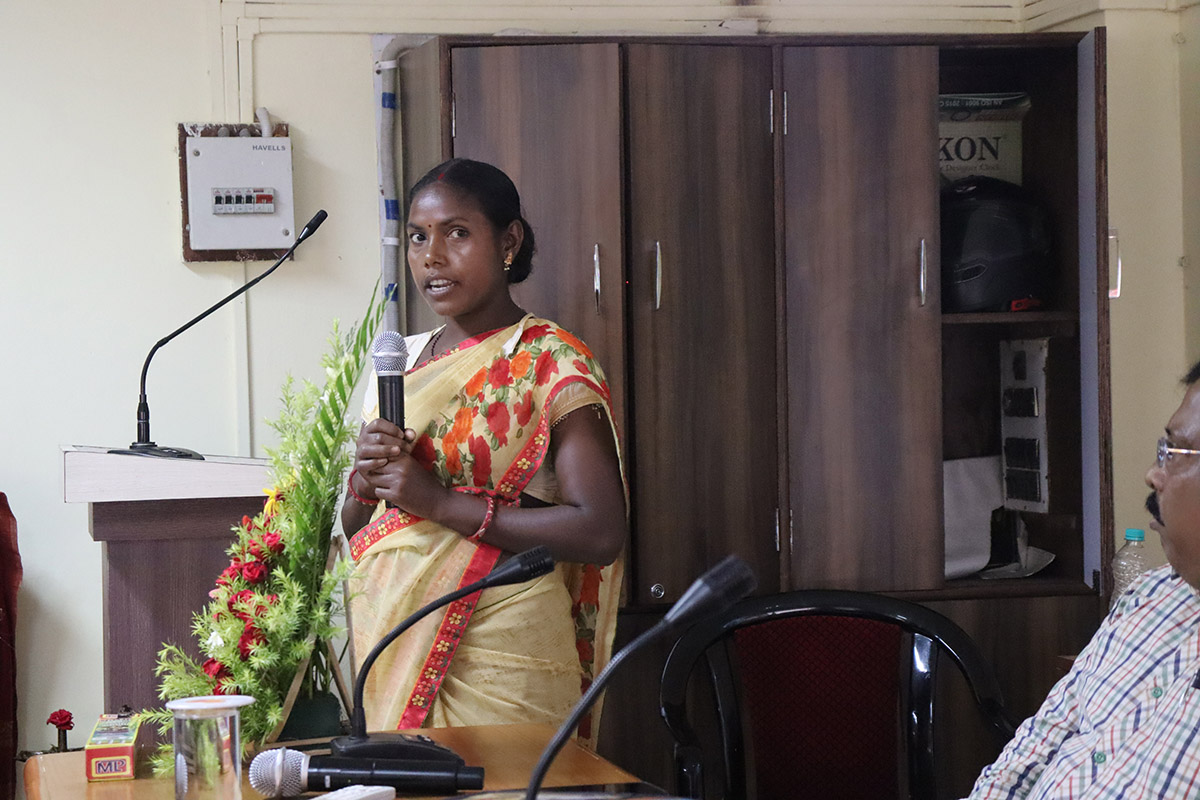 households. The women from
the community
build their institutions to plan, execute, and sustain the initiatives. They disseminate, with extreme
efficiency and reliability. These Sadhes are the inspirations to their community and many to other development
agents who aspire to bring meaningful contributions to this sector of development. This journey with the
underprivileged section of the community has an emergent need for the introduction of new technologies,
innovations, and their demystification, to counter evolving challenges.
households. The women from
the community
build their institutions to plan, execute, and sustain the initiatives. They disseminate, with extreme
efficiency and reliability. These Sadhes are the inspirations to their community and many to other development
agents who aspire to bring meaningful contributions to this sector of development. This journey with the
underprivileged section of the community has an emergent need for the introduction of new technologies,
innovations, and their demystification, to counter evolving challenges.
